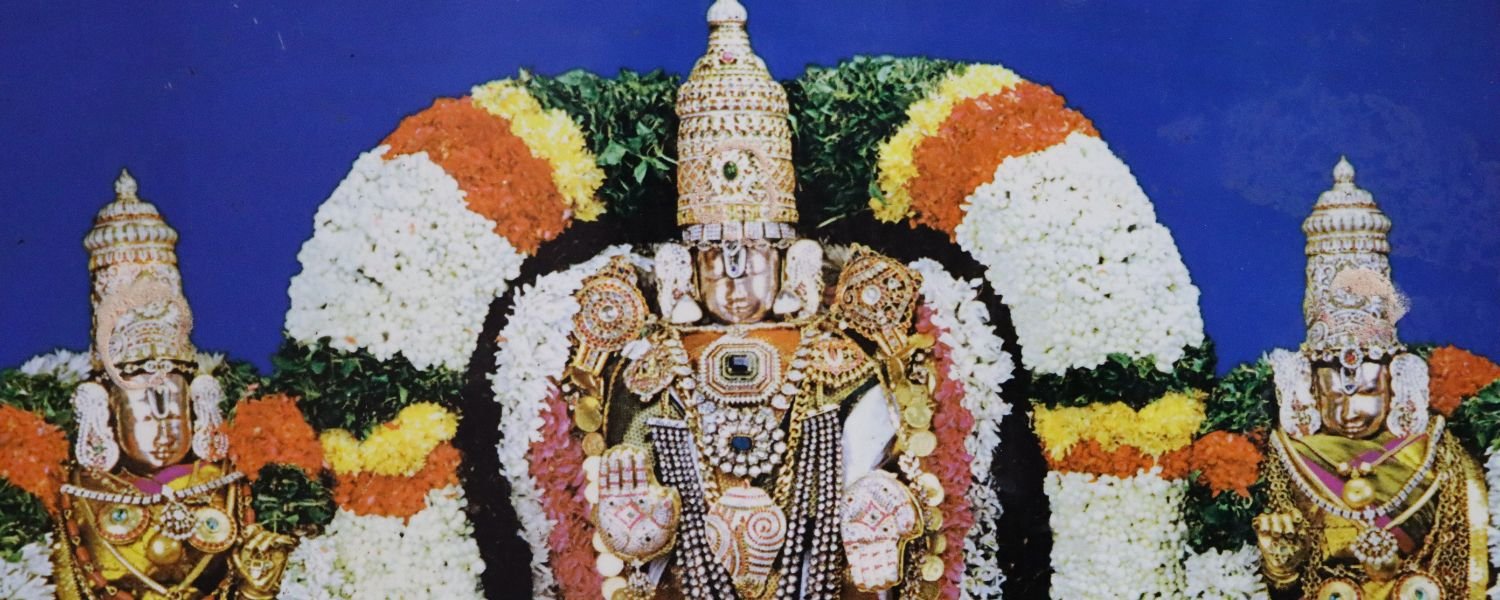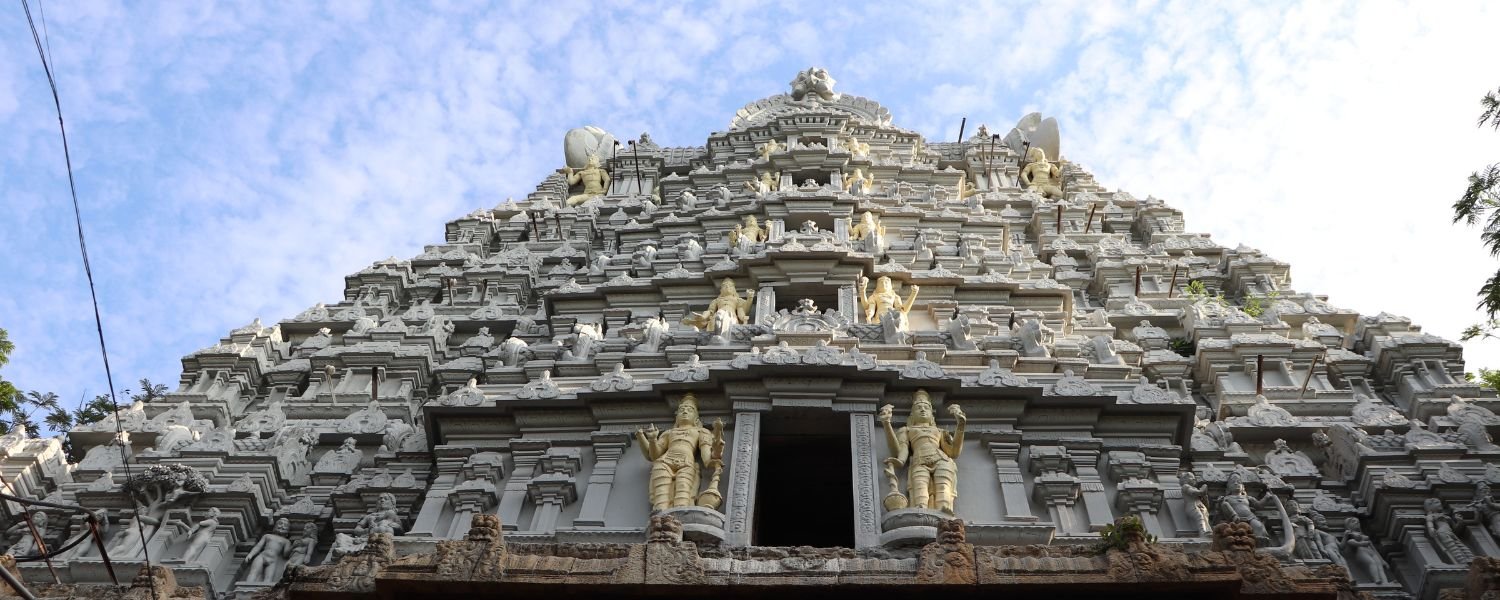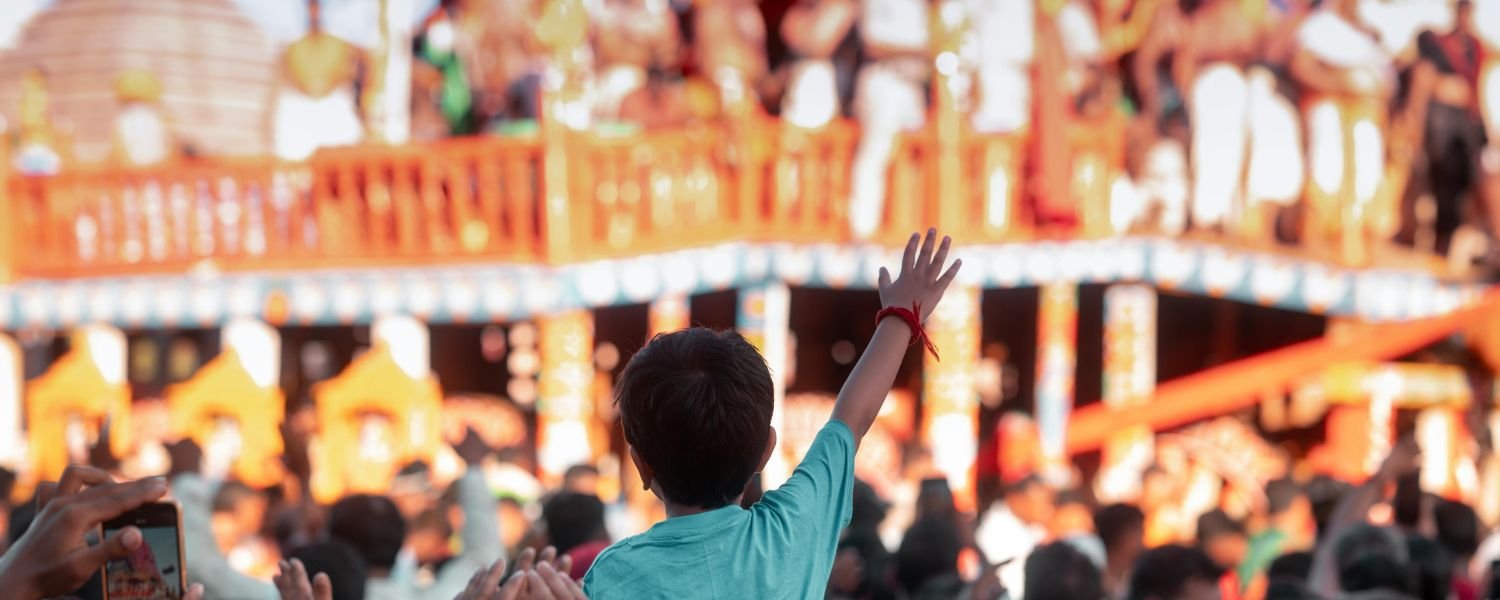One of the most respected gods in Hinduism is Lord Venkateswara Swamy, who is also known as Tirupati Balaji.
Lord Venkateswara is very important to millions of people because they see him as an incarnation of Bhagavan Vishnu, who is the guardian and preserver of the Hindu Trinity.
People believe that he came to Earth during the Kali Yuga to help people, support dharma, and bring them wealth, health, and spiritual growth.
His holy home is the beautiful Tirumala Venkateswara Temple, which is on top of the Tirumala hills in Andhra Pradesh, India. This holy temple is more than just a religious landmark.
It is also a live hub of faith, culture, and history. Each year, millions of people from all over India and the world come to pray in hopes of getting a glimpse of the holy, which is said to change people’s lives.
Pilgrimages to Tirupati are more than just a religious trip for some people. They are a journey of faith, surrender, and link to the eternal.
The sound of “Om Namo Venkatesaya,” the smell of sandalwood and incense, and the sight of the tall gopuram all leave a lasting impact, making this temple a spiritual lighthouse for many years to come.
Lord Venkateswara’s Qualities and Signs
It is said that every part of Lord Venkateswara’s divine form has a deep spiritual value.
The Shankha (Conch), Chakra (Discus), Gada (Mace), and Padma (Lotus) are his most important symbols. They are all unique to Bhagavan Vishnu and represent his cosmic power and purpose.
The Shankha (Conch)
also called Panchajanya, sounds like the first sound of creation and represents the victory of truth and the awakening of spiritual awareness.
The Sudarshana Chakra (Discus)
stands for the mind, the never-ending cycle of time, and the power to cut through ignorance. It reminds devotees of God’s justice and safety.
The Gada (Mace)
which is also called Kaumodaki, stands for power, strength, and the ability to defeat evil and problems. It is a promise to followers that divine kindness will always win, no matter how strong the enemy is.
The Padma (Lotus)
held gently, it represents cleanliness, spiritual awakening, and the soul’s growth despite the problems of this world.The picture of Lord Venkateswara in the temple is not only stunningly beautiful, but also very important.
It has jewels, a golden crown, and rich silk clothes on it.Every part of his artifacts makes followers think about eternal truths and feel closer to the divine spirit that rules the world with love and fairness.
Ways of Worship

People who honour Lord Venkateswara go through a holy and complicated process that involves their whole body, mind, and spirit. Alankara (Decoration), in which the god is dressed in fine silks, gold jewellery that shines, fragrant garlands, and holy marks made of sandalwood and vermilion, is one of the most beautiful traditions.
By making the Lord look better, the devotee shows how much they love and respect the holy by giving the best things in the world to them.
Next is Archana, which means “flower offerings.” This is when worshipers give the Lord fresh flowers, mostly tulsi (holy basil) and lotus, while saying his names and praises. Each flower is a pure gift from the heart, a sign of giving up and loving someone.
Bhajan, or devotional songs, are also critical. Groups of followers sing hymns and praises, which fill the temple with music and holy energy. These songs create an atmosphere of deep spiritual connection that dissolves ego and brings people together in dedication.
During these ceremonies, things like lamps, kumkum, turmeric, incense sticks, camphor, brass and metal idols, and holy coins are used. Each item has a symbolic meaning.
For example, incense cleans the space, lamps show that light triumphs over darkness, and kumkum shows that a believer has offered themselves at the feet of the divine.
The story of Lord Venkateswara Swamy
The story of Lord Venkateswara starts with the wise man Bhrigu, who wanted to see which of the three gods (Brahma, Vishnu, and Shiva) was the patientest.
When Bhrigu went to see Vishnu, he was so proud that he kicked him in the chest, which is where Goddess Lakshmi lives.
Lord Vishnu, who is known for having endless patience, rubbed Bhrigu’s foot without getting angry. But this insult hurt Lakshmi so much that she left Vaikuntha and went down to Earth.
Wanting to be with his wife again, Vishnu changed into Venkateswara and went down to the Tirumala hills. There, he meditated and waited.
Eventually, he married Padmavati, who was an incarnation of Lakshmi, after borrowing money from Kubera, the god of wealth.Devotees believe that temple offerings help repay this cosmic loan.
The Pallavas, the Cholas, and the Vijayanagara Empire were all great South Indian powers that helped the Tirumala temple grow and get better over many years. Rituals were made more official by the great saint Ramanuja, who left a tradition that lives on to this day.
Lord Venkateswara’s devotees think he gives the best gift: moksha, which means freedom from the cycle of birth and death.
People believe that seeing the god (darshan) can wash away sins, grant wishes, and free the soul from spiritual chains. This makes Tirumala a source of hope for millions of people.
What Lord Venkateswara Means to Hindus
In Hinduism, Lord Venkateswara is a unique figure who stands for divine mercy, security, and hope. Venkateswara is worshipped as the most important god in Indian temples, especially in the southern states. His brass or silver statues are also kept in many houses as altars.
His presence gives devotees a sense of holiness and comfort, telling them of the Lord’s grace in both happy and sad times, whether they are in a big temple or a simple home.
Offerings and daily prayers at home are some of the rituals that people do to honour Venkateswara. More elaborate events are held in temples.
People who worship the Lord chant the holy mantra “Om Namo Venkatesaya”, give tulsi leaves, light lamps, and make special sweets called prasadam in order to get the Lord’s blessings on their health, success, and spiritual growth.
Rituals like Suprabhatam, Thomala Seva, and Sahasranamarchana are performed in temples, especially at Tirumala, following custom to the letter. Every day, thousands of devotees come to see these performances.
Beyond rituals, Lord Venkateswara has an impact on families’ and groups’ religious life that lasts for generations. Not only are temple celebrations like Brahmotsavam and Vaikuntha Ekadashi events, but they also bring families together, pass on practices to the next generation, and strengthen ties between communities.
Many people worship Venkateswara and pass on their traditions through stories, rituals, and pilgrimages. This makes his divine presence a big part of family life and makes sure that loyalty to the Lord lasts through time and generations.
The Holy Place: Tirumala Venkateswara Temple

The Tirumala Venkateswara Temple is one of the most famous and highly important places in Hinduism. It is in the hill town of Tirumala in the state of Andhra Pradesh.
The temple is 853 meters above sea level on Venkata Hill, one of the seven sacred Tirumala Hills. The location of the temple makes it feel like it is closer to heaven, giving worshipers a feeling of divine elevation and peace.
The temple’s building is a masterpiece of the Dravidian style. It has tall gopurams (gateways), pillars with intricate carvings, and a magnificent golden tower called Ananda Nilayam that stands on top of the sanctum. The Pallavas, Cholas, and Vijayanagara rulers all helped build the temple over many centuries.
It is decorated with sculptures that show scenes from Hindu mythology, making it a living memorial of art and devotion.
The temple is full of rituals every day. At dawn, Suprabhatam wakes the god, and then there are elaborate gifts, flower decorations, chanting, and evening aratis.
Carefully carried out every day, these ceremonies keep alive customs that have been observed for more than a thousand years.
In addition to its spiritual appeal, the temple is very important to the business. The famous hundi (donation box), which gets a lot of donations from pilgrims, keeps the temple going.
With these funds, the temple can run and offer free meals, lodging, hospitals, and charity activities. Tirumala is not only a place of worship, but also a place where people can help others and do good things for the community.
For believers, coming here is a once-in-a-lifetime opportunity to meet the holy, feel at peace, and be part of a chain of faith that spans hundreds of years, making it one of the prominent Cultural Heritage Sites in Andhra Pradesh.
How to Get to the Tirumala Venkateswara Temple
The Tirumala Venkateswara Temple is in Tirumala, Andhra Pradesh. It is 853 meters above sea level and situated on the holy Venkata Hill, one of the seven renowned Tirumala Hills.
Easy ways to get to Tirumala
By Flight: Tirupati Airport is approximately 40 km away, the closest airport. It links big towns like Bengaluru, Chennai, and Hyderabad. This southern state of India boasts a network of airports managed by the Airports Authority of India or the Andhra Pradesh Airports Development Corporation Ltd. (APADCL).
By Train: The 26 km away Tirupati Railway Station is a central rail hub where trains arrive from all over India at all times.
By Road: From Tirupati to Tirumala, there are daily buses, taxis, and private cars. The ride up is beautiful on the smooth ghat roads.
For religious people, there are two ways they can take:
Alipiri Mettu (9 km) A traditional path on foot with 3,550 steps that is lit and has a roof over it.
The Srivari Mettu path is approximately 2 km long and features around 2,400 steps. It is shorter and steeper, and devoted people often walk it.
On the way to seeing the Lord, each path gives you a chance to surrender, do repentance, and be deeply devoted.
Places to stay and places to stay
Tirumala offers a range of hotels, run by the Tirumala Tirupati Devasthanams (TTD) and private companies, to cater to the diverse needs of all pilgrims.
Accommodations for TTD include

There are guest houses, cottages, and soup kitchens, as well as dorms and family rooms.
Discounted prices for visitors and the ability to book online through the official TTD website.
Choices for yourself
Hotels and lodges in Tirumala and Tirupati offer more luxurious stays, but it is recommended to book ahead of time, especially during holidays.
Free places to stay
TTD provides dorms and waiting rooms, allowing even those without reservations to find a place to stay.
Booking tips
Book your TTD accommodations as early as possible, especially during Brahmotsavam and Vaikuntha Ekadashi.
Please bring your photo IDs with you, as most online bookings require them for check-in.
The spirit of the temple is evident in the way pilgrims are treated here: with care, simplicity, and dedication.
Spiritual Growth through Darshan
The most important part of the journey is seeing Lord Venkateswara. Devotees wait hours or even days for this moment, which stirs their souls.
The feeling of darshan
The air is filled with the chanting of the Vedas, the scent of incense, and the eagerness of the followers.
As you walk into the temple, the sight of the goddess, who is adorned with gold, flowers, and jewels, is so beautiful that it often brings tears to people’s eyes and fills them with a profound sense of calm.
Effects on the spirit and the emotions
Many devotees believe that the darshan purifies the heart, alleviates worries, and is a moment of connection with God.
Many people leave feeling better, with increased strength and hope.
Things you should bring for pooja
For the offering, there should be tulsi leaves, sandalwood paste, small brass or silver figures, and holy coins.
Many travellers also bring Ganesha brass idols or Hanuman pooja kits because they want to be blessed in every way.
Not only is the darshan a sight, it is also an experience that will never leave your mind.
Festivals and Worship for Lord Venkateswara

There are festivals and daily practices taking place in Tirumala, and each one strengthens the bond between Lord Venkateswara and his devotees.
Some significant events are
Brahmotsavam is the most significant holiday of the year, marked by nine days of processions, music, devotion, and beautifully decorated chariots.
Vaikuntha Ekadashi is a holy day when the Vaikuntha Dwaram (heavenly gate) opens, signifying freedom.
In Rathasapthami, special abhishekams and rituals are performed to honour the Sun’s trip northward.
Deepavali, or Diwali, is a festival when homes and churches are lit up with lamps, families pray to Ganesh and Lakshmi, and people give gifts to the Lord.
Varalakshmi Vratam: Women perform rituals to invoke the Goddess Lakshmi, who is married to Lord Venkateswara, to bestow them with wealth and health.
Some of the daily practices at Tirumala are
Suprabhatam: Hymns to wake up the Lord.
Thomala Seva: Giving out new flowers.
People who do Arjitha Seva can make personalised poojas.
It doesn’t matter how big or small the rite is; it’s all an act of love and surrender that adds to Tirumala’s spiritual life.
Miracles and Experiences of Devotees
Tirumala is more than just a temple; it’s a living miracle site where many devotees have felt the grace of God.
Stories that heal
Many devotees claim that they experienced improvement after praying to Lord Venkateswara, attributing their healing to his boundless kindness.
Wishes coming true
People who worship Tirumala go back to give thanks when their dreams come true, whether it’s getting a new job, getting married, or having a baby.
Compliments from devotees
“Following our prayers and vows at Tirumala, we were blessed with a son after years of not having a child.”
“My job was hopeless, but a vow at Venkateswara’s feet changed everything.”
Celebrations for everyone
At festivals like Brahmotsavam, people from all walks of life come together to show their devotion. This strengthens faith and community.
For many, these personal wonders are what make Venkateswara more than just a god; they make him a caring presence in their lives that endures forever.
The Part Lord Venkateswara Plays Today
Even though the world changes rapidly, Lord Venkateswara remains a source of spiritual stability.
Currently used for worship
Every day, families perform poojas at home by lighting lamps, singing “Om Namo Venkatesaya,” and offering flowers.
The rise of religious items
There are many brass and silver idols, Hanuman pooja kits, and holy coins in the market. These items help followers stay close to the Lord even when they are not in Tirumala.
Influence on culture and charity
Many people are moved by his lessons to give to good causes, support annadanam (free meals), or give to hospitals and schools run by temple trusts.
Lord Venkateswara is more than just a god for many people. He is also a symbol of kindness, service, and moral power.
Stories and signs connected to Lord Venkateswara
Myths of worship
Marriage to Padmavati: Vishnu descended as Venkateswara to marry Padmavati, a sign of divine love.
Borrowing from Kubera: Venkateswara borrowed money from Kubera, the God of wealth, to pay for his wedding. Devotees help him repay this cosmic loan by giving money.
Protector in the Kali Yuga: Venkateswara is the saviour who leads people to do the right thing in these difficult times.
What customs and things mean
Incense sticks: Cleansing the mind and the space around you.
Faith for all time and divine gifts in the form of brass statues and silver coins.
Decor on the altar: the unity of gods like Hanuman, Ganesh, and Venkateswara, which shows power through devotion.
These tales and signs are more than just traditions; they are real truths that shape the faith of millions of people.
How to Ask Lord Venkateswara for His Blessings
Practices of daily worship
Take a bath, light a lamp, and give flowers and tulsi to the Lord’s idol.
Say the Vishnu Sahasranama or chant phrases like “Om Namo Venkatesaya.”
Noteworthy events
On Ekadashi, you should fast and do Diwali prayers with Lakshmi-Ganesh coins and special sweets.
Do everything the rituals say you should do to celebrate Vaikuntha Ekadashi.
Setting up an altar at home
In the middle, put a brass Venkateswara idol. On either side of it, put a Ganesha or Hanuman statue. Keep it clean and decorated.
Advice for pilgrims
Visit Tirumala, follow the temple’s rules, and request darshan with respect and humility.
Devotees form a strong bond with the Lord by worshipping at home and visiting the temple.
Accepting the Divine Glory of Lord Venkateswara as our final thought
There is more to Lord Venkateswara than just a god. He is a living spirit in the hearts of millions.
He is an incarnation of Vishnu and helps, protects, and gives people hope from all walks of life.
Why honouring him is essential
Devotees honour the Lord through poojas, offerings, and pilgrimages. They also find happiness, wealth, and a sense of purpose in their lives.
Festivals and rituals pass on sacred traditions from one generation to the next, strengthening family ties and cultural history.
The way of the spirit
Devotion that never ends, such as daily prayers at home or darshan at Tirumala, fosters a life filled with faith, strength, and kindness.
By embracing Lord Venkateswara’s divine glory, followers embark on a timeless path that transcends the problems of this world to attain eternal spiritual happiness.
Frequently Asked Questions (FAQs)
1. What is the best time to visit Tirumala Venkateswara Temple?
The temple is open year-round, but the best time to visit is from September to February when the weather is pleasant.
Major festivals like Brahmotsavam and Vaikuntha Ekadashi are both spiritually significant and draw huge crowds. For a less crowded experience, consider weekdays and non-festival months.
2.Can I book darshan and accommodation in advance?
Yes! The Tirumala Tirupati Devasthanams (TTD) provides online booking for darshan tickets, seva (ritual) participation, and accommodation through its official website.
Booking is highly recommended, especially during weekends, holidays, and festival seasons, to avoid long queues.
3.What are the essential items to carry for the pilgrimage?
Pilgrims should carry valid ID proofs, comfortable walking shoes (if using footpath routes), a water bottle, light snacks, and personal items.
For rituals, devotees often bring offerings such as coconuts, flowers, tulsi leaves, and other pooja items. Brass or silver coins and small idols are also popular as devotional keepsakes or gifts.
4.What are some nearby destinations to visit around Tirumala?
Apart from the Tirumala Venkateswara Temple, visitors can explore several nearby attractions. The Tirupati town, just 20 km away, offers places like the Sri Kapileswara Swamy Temple and the Sri Venkateswara Zoological Park.
Other scenic spots include the Chandragiri Fort, Talakona Waterfalls, and the Sri Kalahasti Temple, all offering unique cultural and natural experiences near Tirumala.










